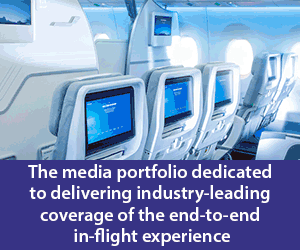The World Radiocommunication Conference 2019 (WRC-19) has concluded in Egypt with agreements signed by 3,400 delegates from approximately 165 Member States enshrined in the Final Acts of the Radio Regulations, the international treaty governing the global use of radio-frequency spectrum and satellite orbits.
One such treaty opens more Ka-band spectrum for satellite mobility solutions, ensuring that Earth Stations in Motion (ESIM) provide access to four times more global Ka-band spectrum for satellite-powered aviation and maritime broadband connectivity.
The decision reaffirmed the WRC-15 decision that Ka-band is the optimal band for expanding satellite broadband services. It also ensures a harmonised international framework for authorising ESIM services throughout the band and across the world, opening the door for airlines and shipping lines to digitise their fleets, and connect more passengers and crew on a single network.
Global Response
In response, Mark Dankberg, chairman and CEO, Viasat commented: “We are grateful for the global recognition of the importance of Ka-band satellite broadband for use on mobile platforms from aircraft, ships and ferries to buses and trains. Having a uniform regulatory framework for ESIM applications across nations will enable Viasat to meet escalating customer requirements for mobility service enhancements, while creating a broader environment for further innovation in the mobility sector.”
Gilberto Lopez Meyer, senior vice president, Safety and Flight Operations (SFO) at the International Air Transportation Association (IATA) added: “The airline community congratulates the World Radiocommunication Conference 2019 for its successful work on the issue of ESIM. ESIM will support airlines in providing better broadband connectivity for on-board passengers. It will also serve as an enabler for airlines’ digital transformation effort in enhancing current and future gate-to-gate operations.”
The WRC-23 Agenda includes further defining the conditions for communications of ESIMs with non- geostationary space stations in the fixed-satellite service to provide reliable and high-bandwidth internet services to aircraft, ships and land vehicles. Also on the table will be modernising aeronautical HF radio, new non-safety aeronautical mobile applications for air-to-air, ground-to-air and air-to-ground communications of aircraft systems, as well as possible new allocations to the aeronautical mobile satellite service to support aeronautical VHF communications in the Earth-to-space and space-to-Earth directions.





